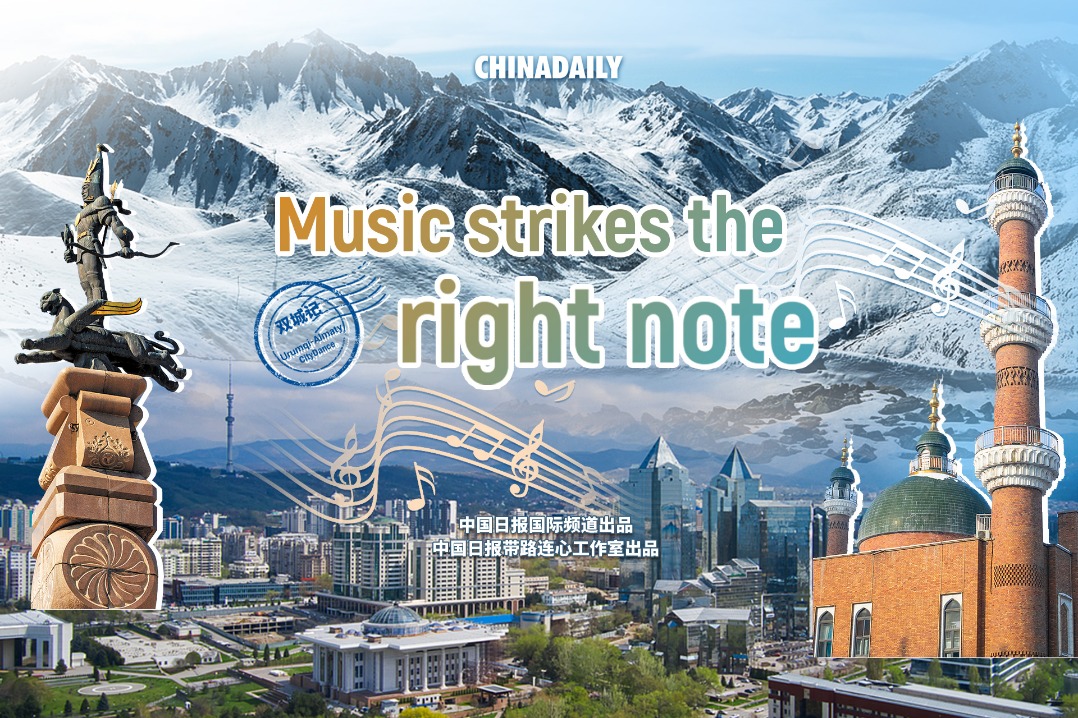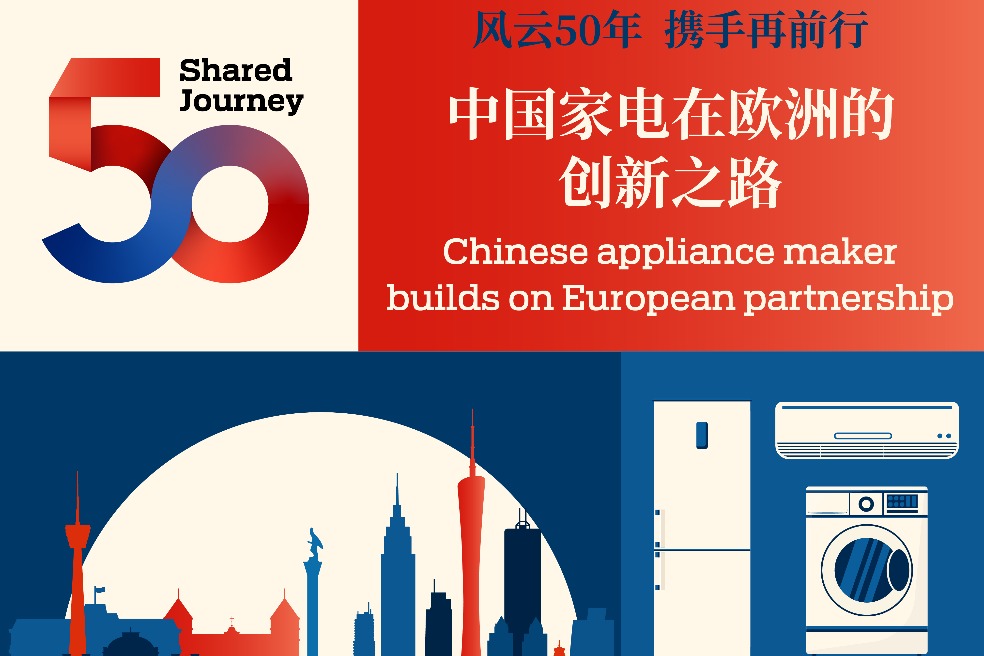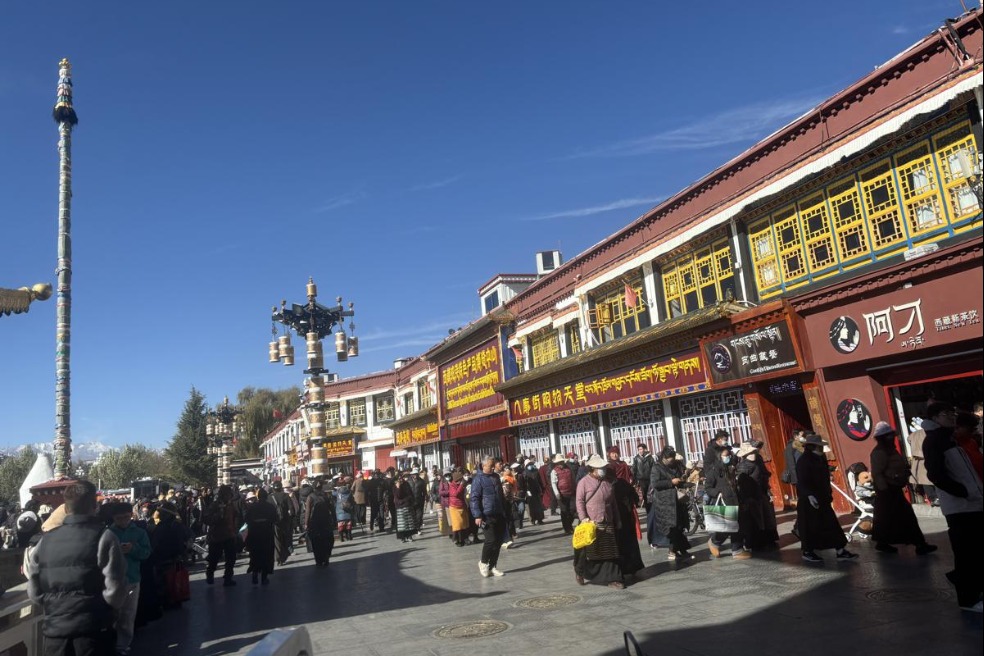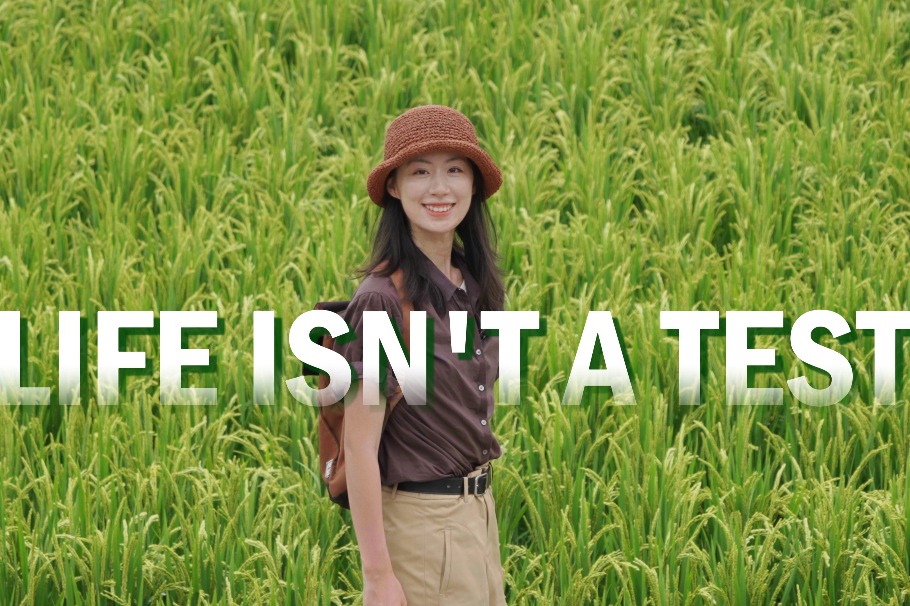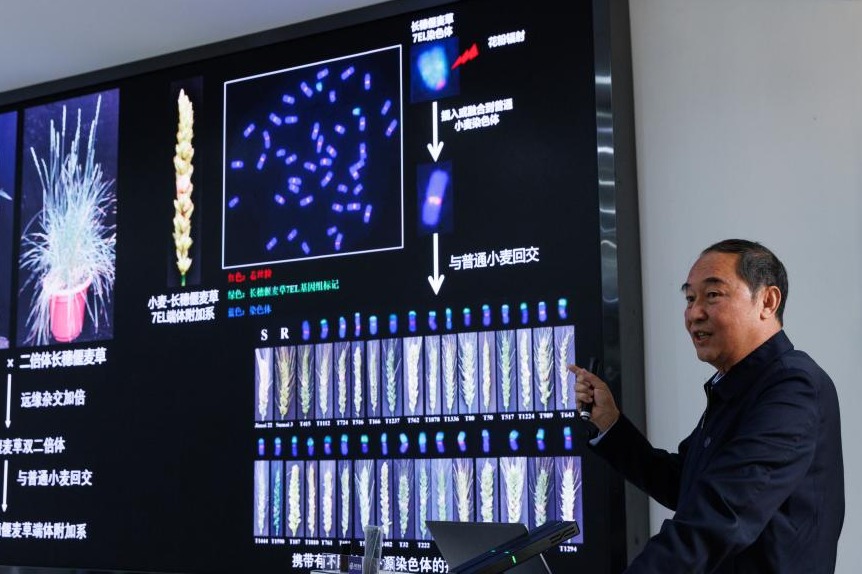Artist celebrates Belt and Road, one brick at a time
Installation serves as bridge spanning various cultures, symbolizing cooperation, Deng Zhangyu reports.

In 2013, artist Shu Yong produced for the China Pavilion of the Venice Biennale a "great wall" of translucent bricks on which more than 1,500 popular Chinese phrases translated by Google were written. The installation, titled Guge Bricks, was created to show cultural bias and misunderstandings caused by translation.
Later the same year, Shu made a gigantic golden bridge comprised of about 20,000 amber bricks to represent his desire to bridge the differences between the East and the West.
The sculpture, Golden Bridge on Silk Road, weighing more than 100 metric tons, has been exhibited in many cities both at home and abroad in the past decade, including Milan in Italy and Astana in Kazakhstan.
"It's a bridge to express the Chinese desire to build a community with a shared future for mankind. It mixes together cultures from different countries and regions involved in the Belt and Road Initiative," says Shu.
Inside the amber bricks are floral emblems from various locations participating in the initiative. The materials used for the bridge were collected from across the world.
The sculpture was inspired by the BRI, China's flagship global development project. As its 10th anniversary approaches, Shu is preparing to place the amber bridge in Beijing, which he says will be a major undertaking.
When it was exhibited two years ago in Guangzhou, South China's Guangdong province, it took about 500 workers a whole year to produce the large-scale sculpture. To set it up took about 20 days.
"It's much more than a bridge. I hope in the future it can be seen as a cultural symbol of China in the new era," says the 49-year-old artist, who is also a member of the National Committee of the Chinese People's Political Consultative Conference.
At the two sessions in March, Shu came up with a proposal that China should establish a series of national cultural symbols centering on the BRI to help spread the idea of building a community with a shared future. His proposal was selected as a key suggestion from among more than 4,000 by conference members from all walks of life earlier in May.
"As China enters the world stage, it should create Chinese cultural symbols easily recognized by people across the world. Artists should shoulder the mission to be engaged in the building of China's cultural symbols," Shu says.
He recalls when he and his child went to a theater to watch a Chinese war movie, his child asked why Superman or Spiderman didn't show up to save the soldiers who were killed and wounded by bombs in battles to protect their country. At that moment, Shu strongly felt that the country needed its own cultural symbols instead of relying on those introduced from the West.
He even conducted a survey in New York many years ago to learn if people recognized several images or symbols related to China. However, few could do so. Later, he went to Beijing and asked people to name symbols or images related to the United States. In contrast, most were able to.
"Cultural symbols can help a lot in spreading China's culture across the world. China continues to deepen its connection with the world, especially this year, when we celebrate the 10th anniversary of the BRI. So, setting up a series of national cultural symbols is an urgent and indispensable task," Shu says.
Shu's golden bridge has been exhibited in many events related to the initiative. He has invited celebrities and ambassadors across the world to sign the amber bricks and sent amber balls with silk flowers embedded inside to people who did so. These acts of interaction with the sculpture link people to the work.
"People who sign the bricks become part of the bridge and participants in its construction. It's just like the initiative — many nations and regions engaged in building the Belt and Road together," says Shu.
Shu talked with China Daily at an art museum named after him in Beijing. The five-story structure displays Shu's artworks produced in the past decades, covering paintings, installations, sculptures and photos.
Shu was born in Hunan province, where he learned ink painting when he was a child. When he enrolled in the Guangzhou Academy of Fine Arts, he chose oil painting as his major. However, the artist says he never sets limitations on his art. Inspired by versatile artists like Leonardo da Vinci and Michelangelo, he hopes his art can be diversified.
Since January 2020, Shu has painted a picture every day. No matter how busy he is or where he is, he completes the task. He has produced more than 1,200 paintings.
The subjects vary, depending on his immediate experiences. He centered on the pandemic after the COVID-19 outbreak. From abstract style to landscape paintings, he created a variety of works paying tribute to the heroes fighting the pandemic. During the Beijing Winter Olympics last year, he blended imagery such as the Olympic and Paralympic mascots Bing Dwen Dwen and Shuey Rhon Rhon with various traditional Chinese cultural elements.
This year, he drew a series of rabbits to celebrate the Chinese Lunar New Year.
Shu takes brushes and ink with him everywhere and always draws late at night. He once painted at an ink store and spent the night there when he lost his supplies.
Many of his friends don't understand why he has to spend so much time on these daily paintings since his early works have already ensured his fame.
"I believe that drops of water can outlast stone. The act of creating is self-sublimation for me, just like the building up of national cultural symbols. It needs the continuous efforts of generations," says Shu.
The artist plans to build amber bridges in various locations along the Silk Road Economic Belt and 21st Century Maritime Silk Road based on the designs of local bridges.
"I know it will be a long-term project. I am prepared to work until the last minute of my life," he says.
According to Jiang Yingchun, general manager of Poly Culture Group, a major State-run cultural institution, "Shu's works usually combine elements of China's political, economic, social and media landscape, and vividly reflect the development process of the country."
Shu says: "Art should help improve society and echo the time the artist lives in."

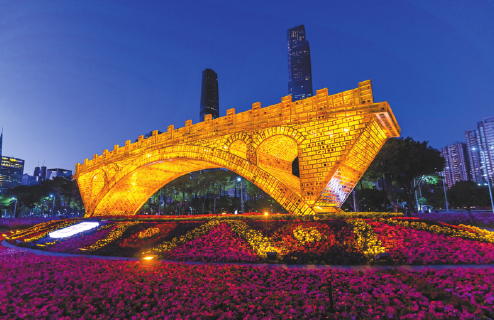
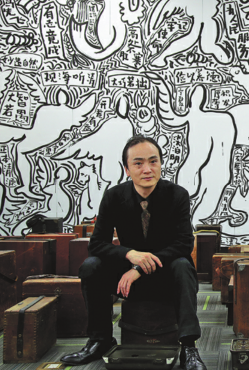
Today's Top News
- Judicial reform critical for modernizing governance
- Effective use of investment emphasized
- China's shuttle diplomacy strives to reach ceasefire
- Nanjing Museum's handling of donated art, relics being probed
- Key role of central SOEs emphasized
- New travel program hailed as 'milestone'

















